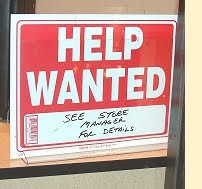When Will the US Prime Rate Go Up?
 |
| When Will The Prime Rate Rise? |
What do high employment and slow economic growth have to do with the US Prime Rate? Actually, everything. It’s because so many Americans are jobless, and because the economy is anemic with virtually no inflation, that the Prime Rate in the United States won’t rise any time soon; certainly not before the end of 2010.
The Prime Rate is used as an index for many financial products, like consumer credit cards, business credit cards, personal loans, home equity lines of credit and business loans.
The Federal Reserve (The Fed), which serves as America’s central bank, controls the Prime Rate, via the benchmark fed funds target rate. The formula is easy: US Prime Rate = (the fed funds target rate + 3). The target fed funds rate is the most important short-term interest rate in the United States. It determines the cost of overnight loans between American banks.
In response to the global banking crisis and Great Recession of recent years, the Fed lowered the target fed funds rate to a range of 0% - 0.25%. It was an unprecedented move by the Fed, one that caused the Prime Rate to drop to 3.25%, in accordance with the formula delineated above. Now, since the Fed has lowered its benchmark rate to its lowest possible level, that means the current US Prime Rate – 3.25% -- is also as low as it can go.
So when will the Prime Rate rise? Answer: when the Fed is satisfied that the US economy is not just growing, but growing sustainably, and at pace that will prompt companies to add new and previously laid off workers to their payrolls. Before the Fed will even consider raising the fed funds target rate, there will have to be a whole lot fewer than 15 million unemployed people in the United States, and threat of deflation will have to have been eliminated. The Fed will likely be looking for an unemployment rate of around 5.5% or lower, with GDP growth of around 3%, for at least two, back-to-back quarters.
The Fed wants inflation to rise at a moderate pace, and to get as many jobless Americans back to work. That is, after all, the Fed’s dual mandate, it’s raison d’etre: price stability, and maximum, sustainable employment.
So if you want to know when the Fed will move short-term rates -- including the Prime Rate -- higher, then pay attention to the latest business news. If you hear or read that:
- nonfarm payrolls have been rising at a strong pace month-after-month, and
- the economy is growing and likely to continue expanding at a respectable pace, and
- the cost of goods and services, from food and energy to cell phones and hair cuts, are increasing at a moderate to strong pace (keep an eye on the PCE Price Index and the Consumer Price Index.) The Federal Reserve has an inflation target of 2.0%.
then, at that point, the Fed is likely to start sending clear signals that a rate hike is in the offing.
Labels: Bernanke, credit_cards, employment, fomc, inflation, prime_rate_forecast, recession
|
--> www.FedPrimeRate.com Privacy Policy <--
--> www.FedPrimeRate.com Privacy Policy -- BACKUP<-- CLICK HERE to JUMP to the TOP of THIS PAGE > SITEMAP < |


